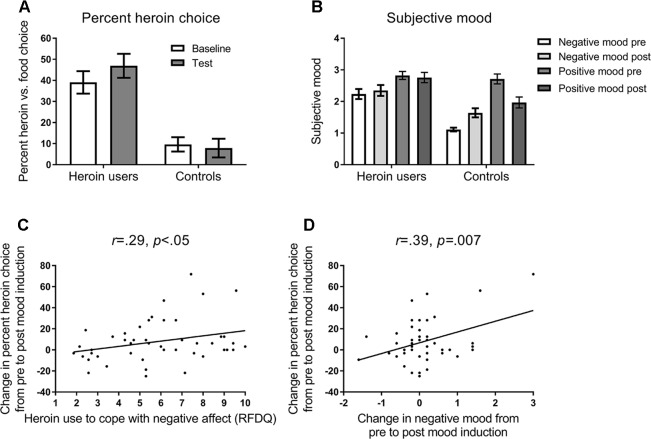Figure 2.
(A) Mean percent (and SEM) choice of heroin versus food pictures in the baseline and test blocks of the task (see Figure 1 ). Opiate-dependent participants showed a higher rate of heroin choice overall compared to control participants, and showed a mood induced increase in heroin choice at test, whereas controls did not. (B) Subjective negative and positive mood states reported at pre-induction and post-test timepoints (see Figure 1 ). Opiate-dependent participants showed no overall change in subjective mood states, whereas control participants showed an increase in negative mood and a decrease in positive mood following mood induction. (C) Scatterplot and regression slope relating the mood-induced change in percent heroin choice to self-reported opiate use to cope with negative affect in opiate-dependent participants. (D) Scatterplot and regression slope relating the mood-induced change in percent heroin choice to self-reported change in negative mood in opiate-dependent participants.

